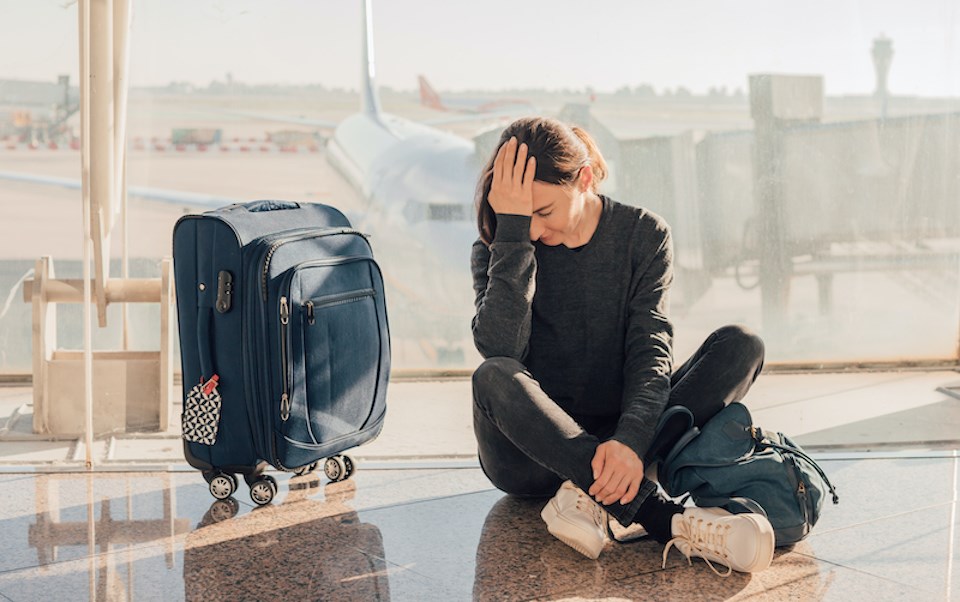Travellers should purchase travel insurance well before their trip, but they may want to research insurance policies before booking flights.
Travel insurance providers cover everything from missed connections to lost or damaged bags, medical emergencies to natural disasters, and more. However, a missed step in the process could result in travellers not getting paid their claims.
InsureMyTrip CEO Suzanne Morrow says travellers headed to places with hurricane seasons should book tickets well in advance. Notably, once a storm has been named, such as the recent Hurricane Helene, they can't get insurance on new bookings to affected areas.
"The devil is in the details," she tells V.I.A. "Travellers need to find out what is covered in what situation."
Morrow explains that the traveller insurance booking process involves three major components: one before travellers depart on their trip, one while they are at their destination, and one when they return home.
Before you leave on a trip
Travellers, including those departing from Calgary International Airport (YYC) or Edmonton International Airport (YEG), must check weather conditions locally and at their destination before heading to the airport. They should also check for government-issued advisories in their destination, including ones issued by the Canadian government.
Political tensions can quickly escalate into violence and travellers are responsible for following their government's advice. Not only could they risk not getting covered by an insurance provider, but they may also put themselves in danger, Morrow notes.
"For example, the conflict in Israel...once it was a known event...if you then booked a trip it wouldn't be covered," she says.
"It's like buying car insurance after you crashed into a tree. It's already known."
Morrow says some policies state travellers shouldn't visit destinations they deem "uninhabitable." For instance, they shouldn't take flights to places with extreme flooding or accommodations without power.
After assessing the risk of visiting a destination, travellers must determine what they need coverage for. Some people will want to do extreme sports in their destination that won't be covered, while others may have a pre-existing medical condition that isn't covered. It is necessary to parse out the best travel insurance policy for your specific needs.
"It’s important to read the wording in your travel insurance policy," she notes.
Some providers, such as Manulife, provide up to $10 million in emergency medical coverage for a single trip, while others may pay a million or less. A million may seem like far more than one could need but medical emergencies, particularly in the United States, may cost significantly more. Medical air transportation by air from one city to another can quickly exceed that amount with urgent care.
Travellers should also take pictures of items in a suitcase to show as evidence when filing for a loss or damages.
During your trip
Travellers in their destination should contact their insurance provider with questions about filing claims or whether something is covered. They should also hold onto all receipts, tickets, medical records, police reports, and baggage proof.
"Think more paperwork, not less. People don't want to think about those things [on holiday] but it is important," she underscores.
"Save your receipts and proof of expenses so you can be accurately reimbursed whether it be costs due to a delay of travel, or medical records for emergency treatment received."
Travellers must also file a police report and submit evidence of that report if they claim stolen items.
When you return home
Travellers returning home from a trip should file a claim immediately to ensure they receive coverage. Most companies provide up to a year to file a claim but many consumers wait six months to a year to receive compensation depending on what company they booked through.
Morrow explains that most insurance providers require travellers to file claims with common carriers before filing through them. For example, if they have a significantly delayed flight, they must file a claim with the airline first. Similarly, travellers who book cruises, train trips, car rentals, or other forms of transportation need to contact those companies first.
Medical coverage works differently. Travellers don't file a claim with a healthcare provider but must save all receipts.
InsureMyTrip has a list of documentation travellers should keep
- Receipts and itemized bills for all expenses
- Unused travel tickets and proof of payment for those tickets
- Explanation of diagnosis from doctor, as well as medical bills
- Police report for any stolen items or car accident report
- Proof from the airline that your baggage was lost or delayed




.jpg;w=120;h=80;mode=crop)